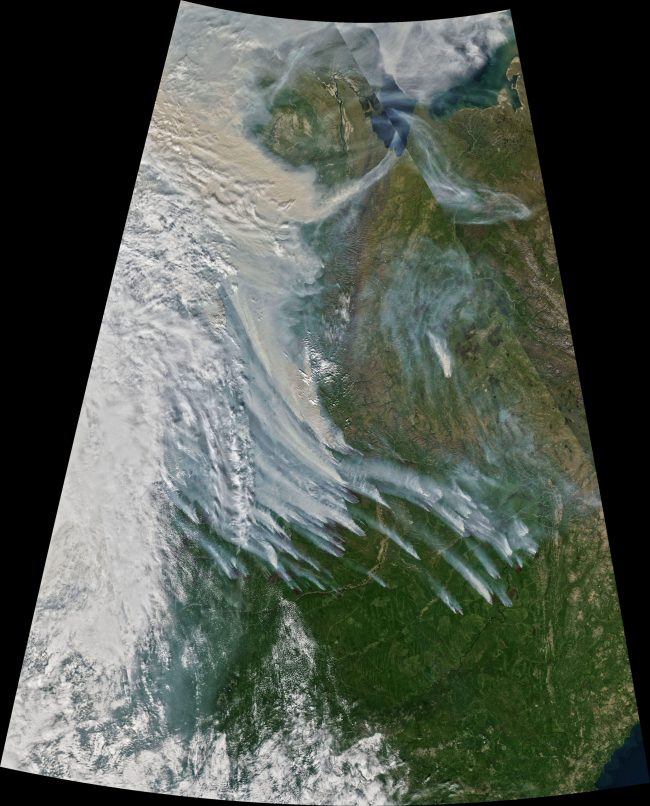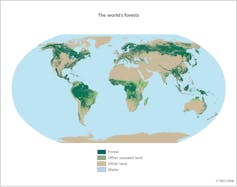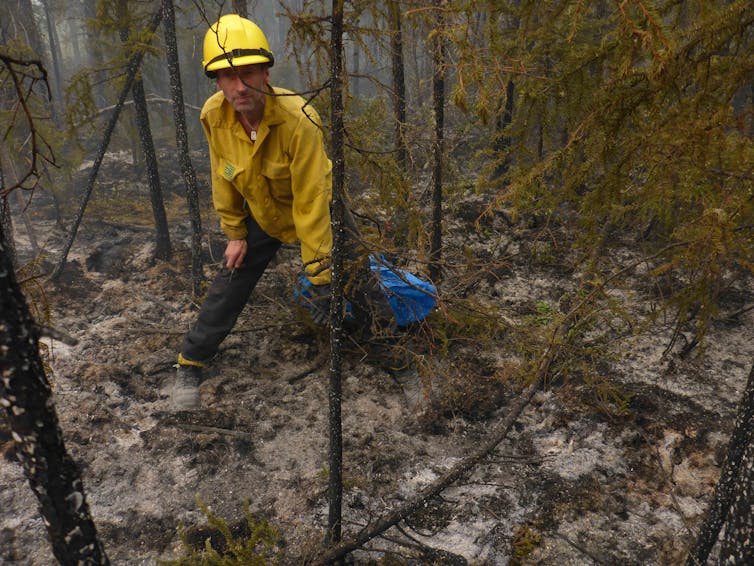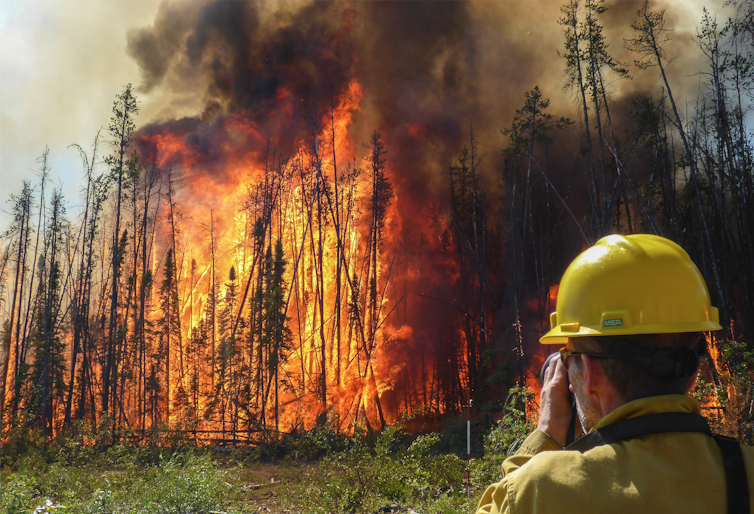
By Tadas Nikonovas, Swansea University and Stefan H Doerr, Swansea University
The vast boreal forests of the Northern Hemisphere stretch from Scandinavia through Siberia, Alaska and Canada. They cover 1/10 of the world’s land but hold 1/3 of the land’s carbon. This substance – the primary greenhouse gas when released into Earth’s atmosphere – is stored mainly in organic-rich soils and in trees. Now, a new study dated March 2, 2023, in the peer-reviewed journal Science provides further evidence that carbon emissions from wildfires in high northern latitudes are already increasing at an alarming rate. In the future, as Earth warms and wildfires increase still more, it’s possible these northern forests will release more carbon than they hold.
In these forests, the cold climate and often waterlogged ground means fallen tree bark, needles and other dead organic matter takes a long time to decompose. This has allowed the soils to accumulate carbon over thousands of years after the ice sheets retreated at the end of the last ice age. Since then, these ecosystems have mainly been shaped by wildfires ignited by lightning.

Wildfires releasing carbon in world’s largest forests
These fires release back into the atmosphere some of the carbon stored in trees and, notably, in the upper layer of soil. The release of soil carbon is hugely significant. It means a boreal forest fire will release 10 to 20 times more carbon compared to a similarly sized fire in other ecosystems where fires consume mainly vegetation and where the soil itself does not contain enough carbon to burn.
However, these boreal forests might burn only once a century, sometimes even less often than that. This is much longer than in most other fire-prone ecosystems, and the extra carbon stored in soils and trees in the long period between fires normally exceeds the losses from fires. For the past 6,000 or so, years this delicate relationship between carbon uptake and release was quite stable and boreal forests served as a globally important carbon sink.
But global heating, which is particularly pronounced in the Northern Hemisphere’s high latitudes, is threatening the balance. Soaring temperatures have lengthened the fire season and increased the frequency and severity of wildfires. And, there is growing evidence that as the interval between fires shortens, more carbon is being released from organic soils in boreal forests than the ecosystems can reabsorb.

Satellites can spot gas emitted by wildfires
That’s where the latest study in Science comes in. The researchers, mostly based in China, used satellite observations of wildfire smoke plumes to look for carbon monoxide, which is invisible to the eye but shows up at certain infrared wavelengths. Carbon monoxide isn’t itself a greenhouse gas. However, if you know how much of it there is, you can infer the amount of carbon dioxide in wildfire smoke as well.
This contrasts with the more conventional methods employed by current wildfire emission models. These also use satellites but record active fires or burned areas simply by comparing before and after images. They then factor in a range of assumptions on how much vegetation would typically have been consumed and how much carbon is emitted per area of different types of vegetation and soil burned.
While this new carbon monoxide method has its own uncertainties, it provides independent and more direct estimates of wildfire emissions. It also has potential to give us a more detailed understanding of the differences in wildfire carbon emissions between different ecosystems.

A dramatic increase
The new study showed a significant increase in emissions from boreal fires over the past two decades. Things were particularly dramatic in 2021, when they comprised a record 23% of global vegetation wildfire emissions, more than twice their contribution in a more typical year.
If this trend continues, the boreal forest may very soon become the dominant source of global emissions from biomass burning. These fires would overtake the notorious tropical peatland fires (such as those in Indonesia in 2015) in terms of global significance. Plus, they would add further to the fire–carbon-climate warming feedback.
Reaching a tipping point
The 2021 fire season was particularly extreme due to simultaneously hot and dry conditions both in North America and northern Europe and Asia. If such weather patterns do become more frequent, leading to more fires in the boreal region, these forests may reach a wildfire tipping point. A study examining the extreme fires of 2014 in boreal northwest Canada demonstrated that some areas were already turning from carbon sinks into net emitters. This new study covering the entire boreal biome suggests this ecosystem as a whole – from Siberia to Canada – is rapidly approaching this tipping point.
Tadas Nikonovas, Research Officer, Geography Department, Swansea University and Stefan H Doerr, Professor of Geography and Director of the Centre for Wildfire Research, Swansea University
This article is republished from The Conversation under a Creative Commons license. Read the original article.
Bottom line: The world’s largest forests, such as those in northern Canada and Russia’s Siberia, were historically carbon sinks, holding more carbon than they released into the atmosphere. But due to the increasing length of the fire season in the north and more wildfires that burn carbon-rich soil, these forests are reaching a tipping point of releasing more carbon into the atmosphere than they hold.
Source: Record-high CO2 emissions from boreal fires in 2021
Read more: Wildfire risk will rise, UN report says
![]()
Last chance to get a moon phase calendar! Only a few left. On sale now.











